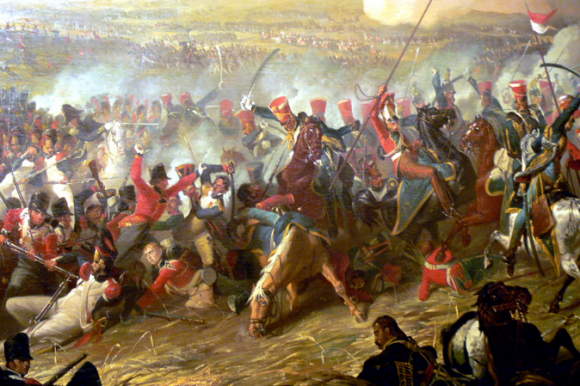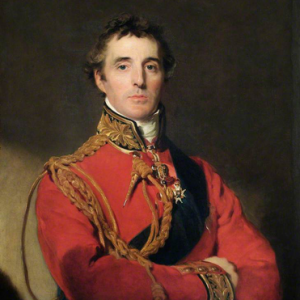aNewDomain — The Napoleonic Era ended 200 years ago. June 18, 1815 marked the Emperor’s final defeat at the Battle of Waterloo. And it was a bloody one. The day-long battle inflected nearly 70,000 French, English, and Prussian casualties out of a combined fighting force of 190,000.
 A re-enactment of various portions of the battle involving thousands of participants will be livestreamed on Friday and Saturday. European dignitaries have already appeared in commemoration ceremonies at the battle site. Prince Charles unveiled a statue today at the Château d’Hougoumont, which saw some of the heaviest fighting of the battle.
A re-enactment of various portions of the battle involving thousands of participants will be livestreamed on Friday and Saturday. European dignitaries have already appeared in commemoration ceremonies at the battle site. Prince Charles unveiled a statue today at the Château d’Hougoumont, which saw some of the heaviest fighting of the battle.
For Napoleon, Waterloo was a last chance gamble to restore his lost empire.
While Napoleon’s empire crumbled, the achievements of the Napoleonic Era continue to this day, such as the Napoleonic Code which forms the basis for most European legal systems.
Forces from Britain, Prussia, Austria, Holland, Russia and other countries had previously defeated Napoleon and sent him into exile on Elba, a small island in the Mediterranean Sea. In early 1815, Napoleon escaped from Elba and persuaded the French army sent to apprehend him to instead join him. Napoleon’s restoration panicked the allied powers and interrupted the Congress of Vienna, which the allies had established to settle the territorial and other issues that had arisen as a result of the French Revolutionary Wars and the Napoleonic Wars.
Napoleon knew that the allied powers would attack France again and overwhelm his forces. Consequently, his objective was to strike quickly at the nearest allied forces to France in hopes of forcing a negotiation in his favor. The closest allied force lay in Belgium and was primarily comprised of British soldiers with another nearby force comprised of Prussian troops.
This video provides a succinct description of the battle itself:
The Battle of Waterloo ushered in an era of relative peace among the countries of Europe. The major European powers would not fight another war against each other until the Crimean War in the 1850s.
The 100th anniversary of the battle was not celebrated because of World War I, which ironically involved the French army allied with the British army against the German army.

The commanding generals against Napoleon were Arthur Wellesley, the Duke of Wellington, and Prussian General Gebhard Leberecht von Blücher. Gen. Blücher was over 70 years old at the time of the battle although his tenacity was critical in winning the battle for the allies. The Prussian general led his army on a difficult march along muddy paths, arriving on the battlefield late in the afternoon.
Here’s the Battle of Waterloo livestream. A two-day pass is available for 20 euros, although a discounted price is available until the end of Thursday.
If you can’t afford a ticket to the livestream re-enactment, here’s a re-enactment of the portion of the battle fought at the Chateau Hougoumont done with Legos:
For aNewDomain, I’m Tom Ewing.
Photo and video credits:
Cover image: Statue of Napoleon on horseback
Image one: The Battle of Waterloo, via www.anglotopia.net
Video explanation of the battle of Waterloo: EpicHistoryTV YouTube Channel
Video of the battle at the Chateau Hougoumont using Legos: Brick Dictator
Image two: The Duke of Wellington by Thomas Lawrence













